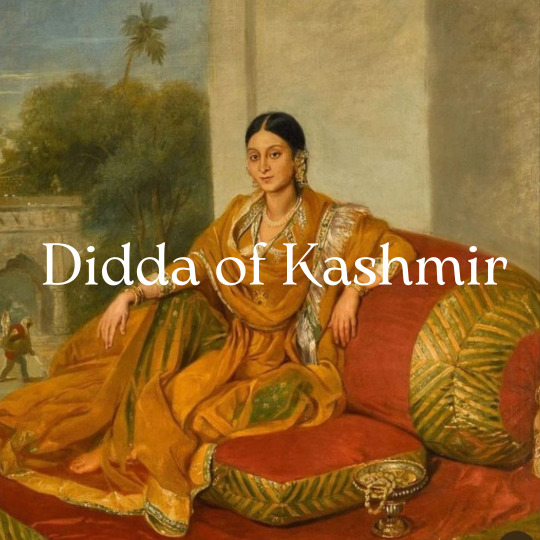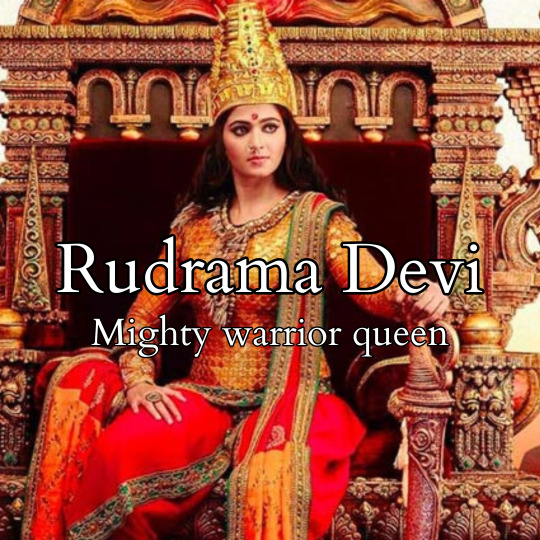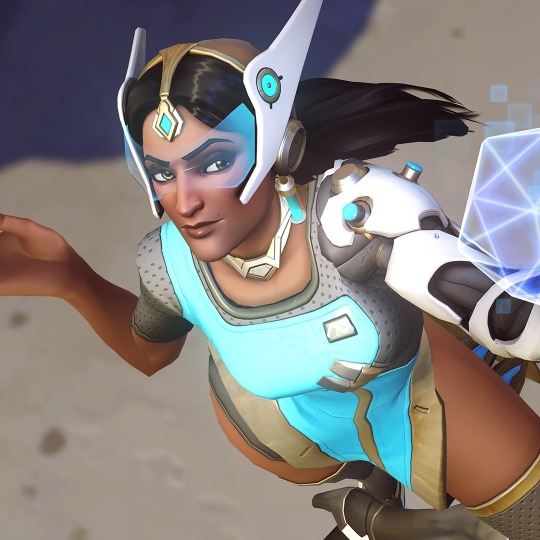#indian queens
Explore tagged Tumblr posts
Text



the folk of the air series but south and south east asian
#art#my art#character design#the cruel prince#tcp#jurdan#jude duarte#cardan greenbriar#oak greenbriar#queen suren#oak x wren#taryn duarte#vivienne duarte#oriana tfota#madoc tfota#tfota#the folk of the air#traditional art#fan art#so many tags but this is FOR ME!!!#oriana is indian madoc and the kids by extension are filipino/adopted filipino#wren is mongolian#cardan is vietnamese
678 notes
·
View notes
Text


The Original American Indians, the Black Indians.
#native americans#the original native americans#choctaw#black indians#indians#african women#black women#afro latinas#dark skin beauty#black queen#africa#black beauty#brownskin#black girl magic#chocolate beauty#melanin poppin#afro beats#afro latinos#caribbean#tropical#black#african#beautiful black women#artist#chocolate
361 notes
·
View notes
Text






"Mother of dragons, Daenerys thought. Mother of monsters. What have I unleashed upon the world? A queen I am, but my throne is made of burned bones, and it rests on quicksand. Without dragons, how could she hope to hold Meereen, much less win back Westeros? I am the blood of the dragon, she thought. If they are monsters, so am I."
Thank you @Nataa_draws for having hosted this amazing challenge! It was very fun to join it and I can't wait to make more art of our beloved Khaleesi 🤧❤️☝️
#illustration#artists on tumblr#chiara cognigni's art#chiara's art#digital illustration#digital art#fanart#art#pre asoiaf#a song of ice and fire#asoiaf art#asoiaf fanart#daenerys targeryan#queen daenerys#daenerys stormborn#meeren#essos#dtiys#indian#desi#fashion illustration#gemma ward#house targaryen#house of the dragon#valyrianscrolls
143 notes
·
View notes
Text

A controversial figure, Didda (924–1003) demonstrated remarkable political skill, overcoming all opposition to rule Kashmir in her own right.
Rise to power
Didda was the daughter of Simharaja, king of Lohara (modern-day Lohrin in Poonch), and seemed to have held her father in high regard. From an early age, she displayed intelligence and a strong, domineering personality.
The chronicler Kalhana referred to her as "footless." While this might have been a criticism of her character, it is more likely that Didda had a physical disability. Though capable of walking, she relied on a woman named Valga to carry her on her back during games that involved running. In gratitude, Didda later commissioned a temple in her honor, called Valgamath.
In 950, Didda married Kshemagupta, king of Kashmir. A dissolute ruler addicted to hunting and gambling, Kshemagupta soon fell under Didda’s influence. He became so associated with her that he was mockingly called "Diddakshema," a contraction of their names. Unbothered by the mockery, Kshemagupta even had coins minted bearing both their names.
Regent against all opposition
Didda gave birth to a son, Abhimanyu. When Kshemagupta died suddenly in 958 from a violent fever, she feared for her son's life and secretly hid him away. Rejecting the tradition of sati, she refused to join her husband on his funeral pyre, arguing that her young son needed her.
With Abhimanyu crowned as king, Didda ruled as regent. She immediately faced opposition from her late husband’s nephews but managed to turn some of their allies to her side. Her minister, Naravahana, defeated the remaining rebels in battle. Didda had the rest of the rebels killed, sparing only those she deemed useful.
She sent her general Yashodhara to subdue the neighboring king of Shahi. When Yashodhara returned victorious, she attempted to arrest him, fearing he might turn against her. Yashodhara rebelled, and although the conflict was difficult, Didda, with the help of her allies, ultimately prevailed.
The chronicler Kalhana had a negative view of Didda, labeling her immoral and licentious—stereotypes he often applied to powerful women. However, he grudgingly acknowledged her strength:
“The lame queen, whom no one had thought capable of stepping over a cow’s footprint got over the ocean-like host of her enemies just like Hanuman got over the ocean”.
A string of tragic deaths
As Abhimanyu grew older, he began opposing his mother’s rule. However, in 972, he died of consumption. His young son, Nandigupta, succeeded him, with Didda continuing as regent. She commissioned numerous building projects in memory of her son, ultimately founding 64 structures during her lifetime.
Tragedy struck again when Nandigupta died within a year of taking the throne. His brother, Tribhuvanagupta, succeeded him but also died soon after. Didda was accused of witchcraft and of orchestrating their deaths, though this seems unlikely, as she had nothing to gain from it. In 975, she placed her third grandson, Bhimagupta, on the throne.
During this time, Didda gained a key ally in Tunga, a commoner whom she initially employed as a letter carrier. Recognizing his abilities, she promoted him repeatedly until he became both prime minister and commander of her armies. Rumors suggested that Tunga was also her lover.
However, as Bhimagupta began showing an interest in governance and reforms, he died under mysterious circumstances in 981. Whispers spread that Didda had him imprisoned and tortured.
Ruling in her own name
With no heirs left to rule, Didda formally took the throne, minting coins bearing her own name: "Sri Didda". Kashmir had seen female rulers before, such as the legendary Yashovati and Sugandha, who ruled 50 years earlier, first as a regent and then two years in her own name. Didda was the first to govern with absolute power for an extended period.

Copper coins minted during Didda's reign
For the next 22 years, she ruled unchallenged, using bribes, strategic alliances, and ruthless reprisals to suppress periodic rebellions. She notably crushed an uprising led by her nephew.
As she neared the end of her reign, Didda sought a successor. She assembled boys from her maternal family and placed fruits before them, challenging them to collect as many as possible. Her brother’s son, Samgramaraja, incited the other boys to fight among each other and gathered the most. Impressed by his cunning, Didda chose him as her heir.
She made Tunga and Samgramaraja swear to cooperate. Their collaboration ensured stability in the kingdom for the next two decades. Under Samgramaraja’s leadership, Kashmir successfully resisted the invasions of Mahmud of Ghazni—partly due to the strong army and administration Didda had built.
Didda passed away in 1003 at the age of 79.
Though she ruled with an iron fist, she was undeniably a remarkable strategist and politician. As Mark Aurel Stein observed:
“The statesmanlike instinct and political ability which we must ascribe to Didda in spite of all the defects of her character, are attested by the fact that she remains the last in peaceful possession of the Kashmir throne, and was able to bequeath it to her family in undisputed succession.”
Enjoyed this post? You can support me on Ko-fi!
Further reading:
Achakzai Khawar Khan, “Queen Didda: between facts and fantasy”.
Gupta Garodia Archana, The women who ruled India, leaders, warriors, icons
Jan Changez, Forgotten Kings The Story of the Hindu Sahi Dynasty
Kalhana, Rajatarangini
#didda#history#women in history#women's history#historyedit#india#indian history#kashmir#10th century#powerful women#queens#ruling queens#historyblr#historical figures
42 notes
·
View notes
Text

What choices ?
#traditional art#my art#art#dessin#pencil drawing#drawing#ink#indian ink#encredechine#fanart#elden ring#marika#queen marika#marika the eternal#shadow of the erdtree
115 notes
·
View notes
Text
The Water Lily Pond ⚘༉ ࿐ྀུ ❀ꦿ֗


One instant, one aspect of nature contains it all. ~Claude Monet
#Victoria Amazonica#Water Lily#Pond#Garden#Queen Victoria's Water Lily#Nymphaeaceae#Lily Pads#Indian Shot#Canna Indica#Plants#Tree#Acorus Calamus#Sweet Flag#Nymphaea Capensis#Chicago Botanic Garden#Botanical Garden#Chicago#Lake Cook Road#Glencoe#Illinois
66 notes
·
View notes
Text










— the iconic Zeenat Aman through the ages
#zeenat aman#bollywood queens#dailywoc#dailybollywoodqueens#southasiansource#south asian cinema#indian cinema#desi movies#70s bollywood#mine#filmyshilmy
35 notes
·
View notes
Text

Beautiful 🫦💋
#beautiful face#beauty#curvy queens#amazing body#body postivity#thick and juicy#amazingsights#amazing butt#breast indian#india girl#huge natural melons
229 notes
·
View notes
Text

Queen Trish
#queen trish#queen t#black leather gloves#leather gloves#gloves#boots#black leather pants#leather pants#black leather jacket#leather jacket#indian beauty#fashion
29 notes
·
View notes
Text






Apsara 😍✨️ Anushka Shetty in and as Arundhati 👑
#anushka#princess#indian cinema#queen#jewellery#aesthetic#tollywood#kollywood#bollywood#mollywood#sandalwood#kannada#telugu#tamil#malayalam#hindi#traditional#royal#beauty#indian beauty#anushka shetty#regal#gifs#anushka shetty gifs#arundhati#lady superstar#iconic#apsara#ethereal#gold
48 notes
·
View notes
Text

Not soo long ago in apartheid South Africa.
#south africa#apartheid south africa#pencil test#prejudice#segregation#civil rights#sa#discrimination#eugenics#native americans#oppression#apartheid#the original native americans#choctaw#black indians#indians#african women#black women#afro latinas#dark skin beauty#black queen#africa#black beauty#brownskin#black girl magic#chocolate beauty#melanin poppin#afro beats#afro latinos#caribbean
21 notes
·
View notes
Text

An unprecedented female monarch in her dynasty, Rudrama Devi (r.1262-1289) presided over an age of prosperity. A successful warrior queen, she triumphed over both internal and external threats.
Her father’s heir
Rudrama Devi was the daughter of King Ganapati Deva (r.1199-1262) of the Kakatiya dynasty, who ruled over parts of present-day Telangana and Andhra Pradesh in Southern India. Their capital was located at Orugallu (Warangal).
Ganapati Deva was a successful monarch. His kingdom was famed for its’ diamonds and beautiful fabrics. He had no son to succeed him and his older daughter was already married. He thus decided to make his younger daughter Rudrama Devi his heir and gave her the requisite training.
A female monarch would nonetheless be a in vulnerable position and see her legitimacy questioned. To make female rule more acceptable, he arranged a Putrikayagna ceremony for his daughter. This religious rite allowed a sonless man to declare his daughter or his daughter’s son as his son. After that, Rudrama Devi was also known by the masculine name of Rudra Deva. She also attended all public meetings in masculine attire.
Her story is similar in that regard to that of her near-contemporary, Raziya Sultan of Delhi.
A warrior among warriors
In 1259, Rudrama Devi became her father’s co-ruler and assumed sole rule in 1262. She married the Chalukya prince Virabdhadra, who played no part in her administration, and with whom she had three daughters.
Rudrama Devi faced many threats at once. Her neighbors saw an opportunity to conquer her kingdom and her feudatory noblemen couldn’t stand being ruled by a woman.
She stood her ground and prevailed, proving her might as a warrior queen. Many of her nobles rebelled, but she successfully defeated them. The Seuna Yadava king, Mahadeva, invaded her territories and reached her capital. Rudrama Devi chased him after 15 days of fighting and forced them to pay a heavy tribute in money and horses.
To commemorate her victory, she styled herself “Rayagajakesari” or “the lion who rules over the elephant kings”. In the pavilion she built, she was depicted as a warrior mounted on a lion, holding a sword and a shield, with an elephant trunk holding up a lotus to her in sign of submission.
In 1262, another of her neighbors occupied the Vengi region. She was able to recover it after 12 years of fighting. She was nonetheless unsuccessful in fending off the attacks of her southern rival Ambadeva.
Meritocratic policies
Rudrama Devi completed the construction of the nearly impregnable Warangal Fort. She bought large tracts of land under cultivation, increasing her kingdom’s revenue. She also recruited non-aristocratic warriors from diverse castes. Only 17 percent of her subordinates were of noble background. Prominent commanders could receive lands and become feudatory nobles. She thus established a new warrior class. Since the nobility had rejected her rule, this meritocratic policy allowed her to surround herself with loyal retainers.
Marco Polo, who mistook her for a widow of the previous king, wrote about her very flattering terms, calling her a “lady of much discretion” and a “lover of justice, of equity and of peace”.
A warrior to the end
At the end of her reign, she chose her grandson, Prataparudra, as her heir.
Rudrama Devi likely died in 1289 (though some sources date her death from 1295) according to an inscription made by a member of her army commemorating her recent death and that of her army chief. The cause and location of her death are unknown. She likely died facing Ambadeva's armies, leading her troops as she had always done.
Further reading
Gupta Archana Garodia, The women who ruled India, leaders, warriors, icons
Janchariman M., Perspectives in Indian History From the Origins to AD 1857
Talbot Cynthia, "Rudrama‐devi, Queen of Kakatiya dynasty (r. 1262–1289)", In: The Oxford Encyclopedia of Women in World History.
Talbot Cynthia, Precolonial India in Practice: Society, Region, and Identity in Medieval Andhra
#rudrama devi#13th century#history#women in history#women's history#historyedit#women's history month#india#indian history#queens#powerful women#women warriors#warrior women#historical figures#herstory
95 notes
·
View notes
Text

page from an old sketchbook when I used to draw traditionally….19 year old me was built different
#John Lennon#freddie mercury#gmaybe666#drawing#art#sketchbook#sketchbook art#queen#the Beatles art#John Lennon art#if I’m not mistaking this is a fountain pen with Indian ink over a pencil sketch
23 notes
·
View notes
Text
The Tawaifs - QUEENS
— them being the Queens of Lahore | heeramandi, 2024, dir. sanjay leela bhansali.
#heeramandi#manisha koirala#sanjay leela bhansali#desi aesthetic#indian cinema#indian aesthetic#desi blog#desiblr#desi tumblr#sharmin segal#aditi rao hydari#sanjeeda sheikh#bollywood#bollyflix#netflix india#indian culture#THEM LITERALLY THE QUEENS OF LAHORE
65 notes
·
View notes
Text
You know... with how we know how carefully the writer's room is built each season, we can already surmise that Akasha won't be a huge feature in S3.
#adding an accomplished indian writer to help with armand and his backstory#but not a MENA writer for akasha#tells me where/how they're splitting these novels up#interview with the vampire#iwtv#the vampire lestat#queen of the damned
26 notes
·
View notes
Text









Symmetra (overwatch) stimboard
×/×/× ×/× ×/×/×
For day 5 of @squishsquishy 's stimboard challenge,the prompt was animation stims,or gaming stims!
#text#stim#gifs#my edits#autismposting#we stan a canon autistic amputee Indian queen ily symmetra <3#teal stim#gold stim#dnd dice stim#sequin pillow stim#shiny stim#food stim#sweets stim#cake balls stim#gold flakes stim#slime stim#crunchy slime stim#clear slime stim#clear stim#drawing stim#art stim#up close#markers stim#irl hands tw#overwatch#symmetra#stim toy#stim toys#dice stim#squish420
34 notes
·
View notes